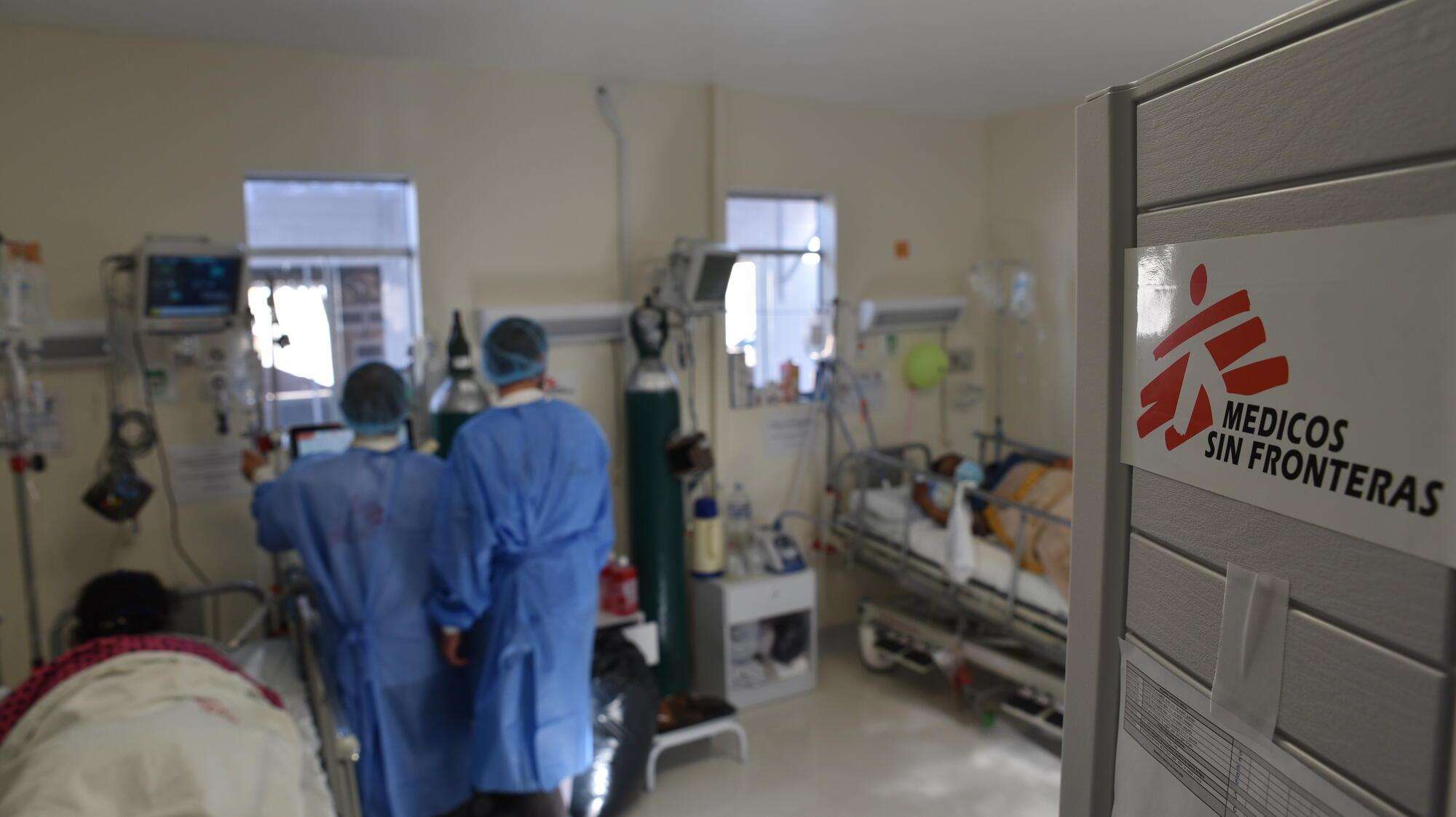NEW YORK/LIMA, JUNE 4, 2021—As Peru faces one of the highest COVID-19 mortality rates in the world, the international medical humanitarian organization Doctors Without Borders/Médecins Sans Frontières (MSF) has expanded its emergency intervention in the country with a new facility in the southeastern city of Cusco. The country, which recently revised its data to reflect more deaths from COVID-19 than were previously reported, is experiencing a major gap in its access to vaccines and is still struggling with overwhelmed intensive care units across the country.
“The main challenge today is to help patients in severe and critical condition,” said Francesco Segoni, MSF’s emergency coordinator in Peru. “There are almost no beds available in intensive care units, and they are often occupied for long periods by severe COVID-19 patients. Oxygen supplies are insufficient, and a major concern is that the vaccination rate is still very low, leaving people exposed and the health care system under pressure.”
On May 31, 2021, the Peruvian Ministry of Heath (MoH) announced a revised number of deaths from COVID-19 since the beginning of the outbreak. The total number of deaths from the disease now stands at more than 180,000 people, which is two and a half times higher than the previous count (69,300). Even though the overall number of cases has declined in recent weeks, Peru has the world’s highest number of COVID-19 deaths per 100,000 people.
The lack of access to COVID-19 vaccinations is also a major concern. As of today, only 12 percent of Peruvians have received the first dose of a vaccine, and less than four percent of people are fully vaccinated.
“With the presence of multiple variants—and insufficient testing capacities leading to slow detection of cases—as long as people are unprotected, the curve may start ascending again,” Segoni said.
Medical staff in Peru are stretched to their maximum capacity and beyond, and resources are insufficient to meet the needs. To help alleviate some of the pressure on the health system—specifically the intensive care unit of Antonio Lorena hospital—MSF opened its second COVID-19 project in May in the city of Cusco to provide treatment for patients who are in critical condition and need high-flow oxygen.
MSF’s new intervention in Cusco adds to the organization’s ongoing work in Huacho, approximately 87 miles [140 kilometres] north of Lima, the capital, where teams are helping the Regional Hospital’s intensive care unit. MSF teams are also treating patients who need oxygen in a dedicated facility and are working in the community and local health care centers to improve screening and referrals.
More than 140 patients have been admitted in MSF’s 32-bed isolation and high-flow oxygenation center, and more than 2,000 consultations have taken place in the four health centers supported by MSF to facilitate triage. Mobile teams, which have been able to provide home care to some 120 people every week, have worked with the MoH to vaccinate more than 1,000 people with a first COVID-19 shot.
Peru: COVID-19 situation remains critical in world’s worst-hit country
People are unable to access intensive care and lifesaving vaccines

Peru 2021 © Clément Locquet/MSF



